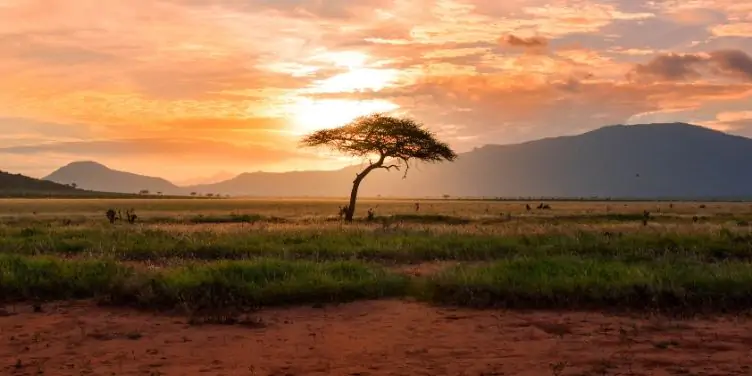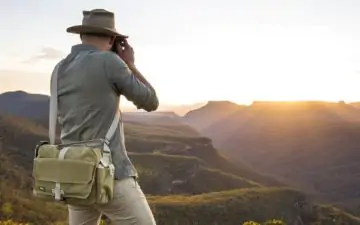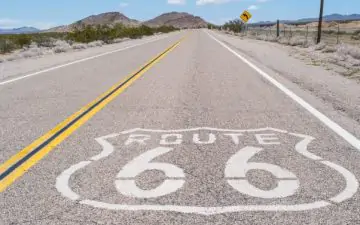Five Reasons Why You Should Visit Kenya

An African safari is the ultimate ‘once in a lifetime’ trip with visitors falling in love with both the continent and the wildlife.
Kenya was one of the first safari destinations and is still one of the best. Here are my top five favourite things to do when visiting Kenya.
1. Private Conservancies
The National Parks are incredibly popular and offer an affordable holiday option, but this success comes at a price. Their popularity has resulted in large numbers of tourists and you may find convoys of mini vans all circling around the same animals. For a more exclusive experience ‘conservancies’ were established where tourist numbers are controlled with accommodation in small safari camps. Gamewatchers Safaris, a tour operator in Nairobi, was a pioneer in creating some of the first conservancies on Maasai community areas in Kenya. Here, they set up Porini Camps to accommodate visitors, starting on land leased from the local people near Amboseli National Park in 1998. This was followed by Ol Kinyei Conservancy in the Mara in 2004 and then Olare Motorogi and Naboisho Conservancies, also in the Mara.
In Kenya, because the parks are comparatively small in size in relation to the greater ecosystems that they are part of, the majority of wildlife is found outside of the parks. These outer buffer lands, crucial to the parks’ survival, are generally community areas for grazing. But in the last decade, land-use has been changing rapidly. With the establishment of each conservancy by Gamewatchers Safaris, it took a long time to meet with the community and reassure them that they wouldn’t be losing their land. Instead, working with the company would be an opportunity to create employment in their Porini Camps and provide income from the land lease payments. The conservancy model proved to the community that the wildlife they have is valuable and through a partnership with a safari company it is possible to protect and benefit from it.
2. Incredible Wildlife
Whichever park or conservancy you decide to visit you’re almost guaranteed to see the some of the more common grazing animals in Kenya; such as buffalo, zebra, wildebeest, eland, giraffe, gazelles, impala and waterbuck. Although common, don’t underestimate the pleasure you will get from seeing them in their natural habitat.
Lions, leopards and cheetahs are present in most parks, but tend to be spotted more in the Mara and the Mara Conservancies. Elephants are best seen in Selenkay / Amboseli and rhino are often sighted in Nairobi National Park, Ol Pejeta Conservancy and Lake Nakuru Park.
While everyone is keen to see ‘The Big Five’ (lion, African leopard, rhinoceros, African elephant, African buffalo) there are many other less well-known animals, and incredible bird life to be found in the different parks, which can also be exciting to watch. In addition to traditional safari drives you can also enjoy a balloon safari as the sun rises over the Maasai Mara and take a walk with a qualified guide or saddle up and explore on horseback.
3. The Great Migration
From July to October herds of over 1 million wildebeest, zebra and other grazing species move over the border from Tanzania and into Kenya’s Masai Mara. Their journey takes them across the Mara River, and it is their struggle to swim across and then clamber up the riverbanks that attracts tourists from all over the world.
To escape the crowds and higher prices, consider travelling in the low season. One of Kenya’s best-kept wildlife secrets is that another migration takes place each year, between January and March. This spectacle does not involve wildebeest migrating northward from Serengeti but is instead, an east to west migration from the Loita plains to the Mara traversing Ol Kinyei, Naboisho and Olare Motorogi conservancies.
4. Eco-friendly Accommodation
For a genuine ‘Out of Africa’ experience nothing beats a tented camp. A ‘safari shower’ is a welcome experience after a day of game viewing. Staff will heat water at your request and bring it to you in a bucket that is hooked up all ready to go at your convenience. You soon learn to moderate the water supply to suit your needs! At eco-friendly ‘bush camps’ you won’t find swimming pools or spa facilities, but instead a team of dedicated staff from the local villages who work tirelessly to ensure you have the best wildlife experience. Little touches such as early morning tea delivered to your tent, hot water bottles to warm your bed at night and delicious home cooked food enjoyed in a comfortable ‘mess tent’ all combine to enhance your stay.
All the Porini camps, small and intimate safari camps, are run on environmentally sound principles specially designed to have minimum impact. The camps have no permanent structures, use solar power for electricity and heat water with special eco-friendly, sustainable charcoal briquettes. Most guests welcome it as a way to detox from everyday life and our online lifestyle.
5. Beautiful Beaches
After the excitement of a safari, a relaxing few days by the sea is the perfect wind-down. It is possible to fly direct from many of the safari parks to the coast, or you can take a connecting flight via Nairobi.
Kenya has an extensive and beautiful coastline with long stretches of pristine sands leading gently into turquoise waters. At Watamu and Turtle Bay a spectacular coral reef attracts divers, Diani Beach offers watersports and deep-sea fishing while the island of Lamu is a honeymooner’s dream. There are hotels, guest houses and boutique properties to suit all budgets. One of my favorites is the family owned WaterLovers Beach Resort on Diani Beach.
The guest rooms have a Mediterranean touch and the Italian owners are passionate about the area and all that it has to offer.
If you are considering a safari, I can recommend Kenya to deliver everything you imagined, and more.










